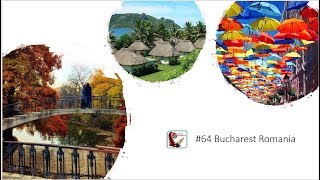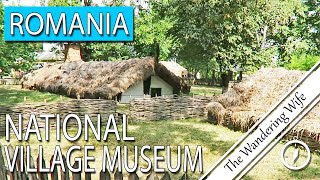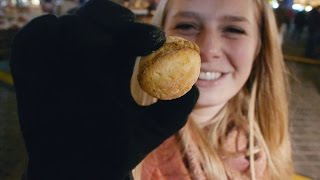Monday, 12 January, 2026г.
















Где искать: по сайтам Запорожской области, статьи, видео ролики
пример: покупка автомобиля в Запорожье
Top 7 Attractions in Bucharest (Romania- The Most Popular)
Romania is a very beautiful in Eastern Europe, and it’s capital, Bucharest, should be on top of your list of cities to visit. Here are a few highlights:
-Romanian Atheneaum
-The Triumphal Arch
-Dimitrie Gusti National Village Museum
-National Museum of Art
-Herastrau Park
-Revolution Square
-The Parliament Palace
If you like the video and want to see more about Romania, check our social media:
https://www.facebook.com/visit.travel.romania/
https://www.instagram.com/visit_romania_com/?hl=ro
https://twitter.com/visit_romania_?lang=ro
https://ro.pinterest.com/visit_romania_com/pins/
-Romanian Atheneaum
Home to the Romanian George Enescu Philharmonic, the stately Romanian Athenaeum is the city's most prestigious concert hall. The 19th-century building, designed by French architect Albert Galleron, resembles an ancient Greek temple with a 41-meter-high dome and a peristyle of six Ionic columns. The interiors feature a lobby of intricately painted gold-leaf ceilings, cascading balconies, and spiral marbled staircases. The 652-seat auditorium is known for its excellent acoustics and its fine art. A 70-meter-long and three-meter-high fresco that winds its way around the circular hall proudly depicts scenes from Romania's history.
-The Triumphal Arch
Arcul de Triumf is a triumphal arch located in the northern part of Bucharest, on the Kiseleff Road.
The first, wooden, triumphal arch was built hurriedly, after Romania gained its independence (1878), so that the victorious troops could march under it. Another arch with concrete skeleton and plaster exterior of elaborate sculptures and decoration designed by Petre Antonescu was built on the same site after World War I in 1922. The arch exterior, which had seriously decayed, was replaced in 1935 by the current much more sober Neoclassical design, more closely modelled in the Arc de Triomphe in Paris. The new arch, also designed by Petre Antonescu and executed in stone, was inaugurated on 1 December 1936.
The arch has a height of 27 metres. It has as its foundation a 25 x 11.50 metres rectangle. The sculptures with which the facades are decorated were created by famous Romanian sculptors such as Ion Jalea and Dimitrie Paciurea.
-Dimitrie Gusti National Village Museum
The Village Museum had in its early days an area of 4.5 hectars of land and hosted 33 authentic household assemblies, transferred from researched villages: houses with annex buildings, a church , a triptych religious monument, technical installations and a swing set.
Nowadays, the Village Museum has 9 hectars, and an increased number of collection pieces. The open-air patrimony gains new showpieces, reaching to number of 62 ensembles of vernacular architecture (as compared to 33 back in 1936), with a number of 223 buildings (40 houses, 165 household annexes, 3 churches, 15 technical installations and craft workshops), summarizing an inventory of over 17.000 units.
-National Museum of Art
In this museum you will find some of the most remarkable collections include the Elena and Dr. Iosif Dona collection, the Alexandra and Barbu Slatineanu collection of Romanian folk art or the prof. Garabet Avakian and Marcu Beza collections of Oriental Art. The museum is a repository of works of important Romanian painters, such as Nicolae Grigorescu, Nicolae Tonitza, Stefan Luchian, Gheorghe Petrascu, Ioan Andreescu. Rare Turkish carpets and Bukhara embroideries are on display.
-Revolution Square
Revolution Square (Romanian: Piața Revoluției) is a square in central Bucharest, on Calea Victoriei. Known as Piața Palatului (Palace Square) until 1989, it was later renamed after the Romanian Revolution of December 1989. The former Royal Palace (now the National Museum of Art of Romania), the Athenaeum, the Athénée Palace Hotel, the University of Bucharest Library and the Memorial of Rebirth are located here. The square also houses the building of the former Central Committee of the Romanian Communist Party (from where Nicolae Ceaușescu and his wife fled by helicopter on December 22, 1989). In 1990, the building became the seat of the Senate and since 2006 it houses the Ministry of Interior and Administrative Reform.
-The Parliament Palace
A colossal building, designed and supervised by chief architect Anca Petrescu (1949–2013), with a team of approximately 700 architects, and constructed over a period of 13 years (1984–97), it was built as a monument for a totalitarian kitsch style of architecture, in Totalitarian and modernist Neoclassical architectural forms and styles with socialist realism in mind. The Palace was ordered by Nicolae Ceaușescu (1918–1989), the dictator of Communist Romania and the second of two longtime autocrats in power in the country since World War II, during a period in which the personality cult of political worship and adoration was in full force for him and his family.
Похожие видео
Мой аккаунт


 У вашего броузера проблема в совместимости с HTML5
У вашего броузера проблема в совместимости с HTML5


